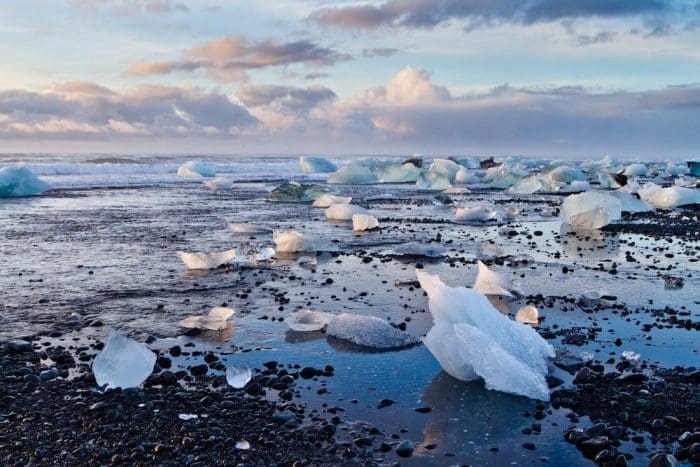For the adventurous soul, the allure of the far-flung and the frigid is undeniable. The landscapes of extreme cold destinations hold a stark, untamed beauty, promising experiences unlike any other. Whether it’s the ethereal aurora borealis in the Arctic or the majestic Himalayan trek, these frozen wonderlands captivate the imagination with their beauty. The vast, white expanse of Antarctica completes the picture, drawing adventurers into its mesmerizing embrace.
But venturing into these domains of perpetual frost requires careful preparation and a healthy dose of respect for the unforgiving environment. In this article, we’ll guide you through essential considerations for a safe journey to the coldest corners of our planet.
Researching Your Destination
Just like any trip, thorough research is paramount for a successful adventure in an extremely cold destination. However, the unforgiving nature of these environments demands an extra layer of planning.
Start your chilling adventure with a deep dive into climate and weather patterns, exploring historical data on wind chills and snowfall. According to Microsoft Start, International Falls, near the Canadian border, boasts a frigid reputation, with a record low of -55°C (-67°F) in 1923. In 2008, it claimed the ‘Icebox of the Nation’ title from Fraser, Colorado.
This underscores the importance of meticulous planning and adequate preparation before venturing into such harsh environments.
Research accessibility and permits, considering transportation and visa requirements alongside necessary permits. Respect local culture by learning customs and traditions, enriching your experience while ensuring community respect. Prioritize safety by familiarizing yourself with destination-specific hazards and emergency procedures for a secure journey.
Packing Appropriately
Ensuring you have the right gear is essential for staying safe and comfortable in extreme cold destinations. Begin by outfitting yourself in premium, insulated outerwear, including waterproof and windproof jackets, pants, and gloves for protection against cold. Layering is key, allowing you to adjust your clothing to the fluctuating temperatures throughout the day.
Spend on thermal undergarments made from moisture-wicking materials to trap heat close to your body while keeping you dry. Wool socks are a must-have to keep your feet warm and prevent frostbite. For added warmth, shop comfortable foot warmers that can be inserted into your boots or shoes, providing hours of heat in the coldest conditions.
CozyWinters recommends investing in top-notch battery-heated foot warmers for enduring warmth throughout winter. These versatile solutions cater to various settings, from home and work to medical needs and outdoor pursuits. Keep your feet snug and comfortable in any chilly environment with these reliable companions.
Don’t forget to pack a sturdy pair of insulated boots with good traction to navigate icy terrain safely. Also, pack a hat or balaclava to protect your head and face from frostbite, along with sunglasses to shield your eyes from snow glare.
Understanding Cold-Related Risks
Traveling to extremely cold destinations presents unique risks that require careful consideration and preparation. Exposure to frigid temperatures can lead to a range of cold-related illnesses and injuries, including hypothermia, frostbite, and even cold-induced asthma. Understanding these risks is crucial for mitigating potential dangers and ensuring a safe expedition.
Hypothermia sets in when the body’s core temperature drops, causing confusion, lethargy, and potentially fatal organ failure without treatment. Conversely, frostbite occurs as skin and tissues freeze, leading to numbness, discoloration, and serious tissue damage. Both conditions demand prompt attention in extreme cold environments to prevent severe consequences.
Approximately 600 people in the United States die from hypothermia each year, according to the MSD Manual. This figure is widely underreported, emphasizing the severity of cold-related risks. Stay safe in extreme cold by preparing with suitable attire, hydration, and early recognition of cold-related illness symptoms.
Planning Outdoor Activities
In extremely cold places, careful planning of outdoor activities is key to having fun and staying safe. Whether you’re skiing on glaciers or hiking through snowy landscapes, pay attention to the weather, terrain, and how much effort you’re putting in. This helps you enjoy your time while avoiding potential risks.
Seek advice from local guides or experts who know the area well to learn about safe routes and potential dangers. Stay open to changing weather conditions and be ready to adjust your plans accordingly, like for sudden temperature drops or blizzards. Flexibility and awareness can help ensure a safer journey in extreme cold destinations.
Physiopedia mentions that according to the NATA position statement, cold-related injuries happen because of low temperatures and wind. When the extremities are exposed to cold air or surfaces, it affects the body’s ability to maintain a normal core temperature. This underscores the importance of protecting against cold and wind exposure to prevent such injuries.
Adjusting to Extreme Cold Environments
Adapting to the harsh conditions of extremely cold environments requires both physical resilience and mental fortitude. As you explore icy landscapes, knowing how your body responds to cold and staying warm becomes crucial for comfort.
One key aspect of adjusting to extreme cold environments is acclimatization. Your body needs time to adapt to the cold, gradually increasing its tolerance to lower temperatures. Begin with brief cold exposure, then gradually increase duration as your body adjusts to the cold environment.
Also, maintaining proper nutrition and hydration is essential for sustaining energy levels and regulating body temperature in cold climates. Consuming high-calorie foods and staying well-hydrated can help fuel your body’s internal furnace and stave off hypothermia.
Seeking Local Advice and Assistance
When journeying to frigid locales, locals’ insights are priceless for navigating unknown landscapes and weather. Seek advice from indigenous communities, seasoned guides, and park rangers with deep knowledge of the area’s hazards and seasonal changes. Their expertise can ensure a safer and more fulfilling experience in extreme cold destinations.
Local advice can provide crucial insights into safe routes, wildlife behavior, and cultural protocols, enhancing your overall experience while minimizing risks. Also, consider hiring local guides or joining guided tours led by reputable companies with a deep understanding of the region’s challenges.
Emergency Preparedness
Preparedness for emergencies is vital in extreme cold destinations, where it can be a matter of life or death. With the potential for sudden blizzards and unforeseen injuries, thorough planning and readiness are essential for survival.
Pack a comprehensive emergency kit containing essentials like first aid supplies, high-energy snacks, emergency blankets, a multi-tool, and a signaling device. Ensure you have a means of communication, like a satellite phone or personal locator beacon, to summon help in case of emergencies.
Take a wilderness first aid course before embarking on your journey to familiarize yourself with emergency procedures and treatment protocols. By prioritizing emergency preparedness, you can mitigate risks and increase your chances of a safe and successful expedition into the icy wilderness.
Frequently Asked Questions
What clothing and gear are essential for extreme cold destinations?
Prioritize merino wool thermals for warmth and moisture-wicking, followed by an insulating mid-layer like fleece. A waterproof outer shell is essential to shield against wind and snow. Don’t forget insulated boots, foot warmers, gloves or mittens, a hat, and a neck gaiter to prevent heat loss from exposed skin.
How do I prevent cold-related health risks while traveling to cold places?
To prevent cold-related health risks, dress in layers for easy temperature adjustment. Pack thermals, a waterproof shell, and insulated boots. Stay hydrated and avoid alcohol, which can impair judgment and decrease body temperature. Be aware of early signs of hypothermia and frostbite.
What are popular outdoor activities in extreme cold, and how can I do them safely?
Exploring the frozen world offers thrilling activities like dog sledding, ice climbing, and snowmobiling. However, safety is paramount. Choose adventures that match your fitness level, and prioritize layering with proper thermals. Always go with experienced guides who can navigate the terrain.
Insights for Extreme Cold Expeditions
Winter’s chill and frozen landscapes beckon adventurers, offering excitement and challenges. With this guide’s essential tips, travelers can confidently explore extreme cold destinations, ready for whatever awaits. Preparedness ensures a safe and rewarding journey through these icy domains.
So, whether exploring Antarctic glaciers or trekking Arctic forests, approach the frost with care, curiosity, and respect for nature. Proper planning and an adventurous spirit promise lasting memories in extremely cold destinations.


